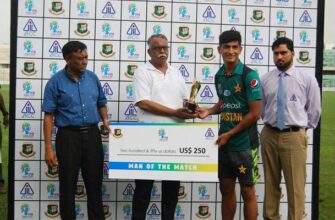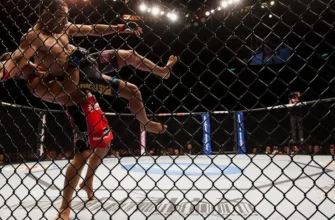From humble beginnings in 1972, where the prize for competitive gaming was merely a magazine subscription, esports has exploded into a global phenomenon. It’s no longer just about playing games; it`s an intricate tapestry woven with technological innovation, the star power of elite athletes, and an increasingly institutionalized framework. At the heart of this evolution are industry pioneers like Razer, whose Global Esports Director, Jeff Chau, offers a fascinating perspective on where this exhilarating journey is headed.
The Relentless Pursuit of Peripheral Perfection: Esports as a Technology Story
In the high-stakes world of competitive gaming, victory often hangs by a thread – or perhaps, more accurately, by a millisecond. This isn`t mere hyperbole; it`s the stark reality that drives the relentless innovation in gaming peripherals. As Jeff Chau succinctly puts it, “Esports itself is a technology story.” The journey from bulky, wired input devices to today’s feather-light, wireless marvels is a testament to an industry constantly pushing boundaries, often spurred directly by the exacting demands of professional players.
Imagine the subtle yet profound shift from a 150-gram, wired mouse used in a game like StarCraft decades ago, to a sub-60-gram wireless mouse with 150-hour battery life, such as Razer`s DeathAdder V4 Pro. This isn`t just about convenience; it`s about competitive edge. Pro players, those digital gladiators, possess an almost uncanny sensitivity to their gear. Every slight drag, every minuscule latency, every ergonomic nuance can impact their performance in games where critical headshots or pixel-perfect movements determine fate. This feedback loop between elite athletes and manufacturers like Razer, Logitech, Asus, and ZOWIE has become a vital engine for progress, forcing hardware to adapt as quickly as game metas evolve.
The transition in game genres, from the “horizontal” mouse movements prevalent in isometric MOBAs like League of Legends to the “vertical” demands of action shooters like VALORANT, has further underscored this need for hardware fluidity. Lighter mice, more responsive sensors, and even the materials and sizes of mousepads are all meticulously engineered to meet new playstyles. It’s a fascinating arms race, where the silent hum of innovation in a gaming mouse can be as impactful as a major balance patch within the game itself.
The Pantheon of Play: How Esports Athletes Shape the Industry
Beyond the gleaming hardware, the human element remains paramount. Esports has birthed a new generation of global superstars, figures whose influence extends far beyond the digital arena. From legendary players like Lee “Faker” Sang-hyeok in League of Legends to tactical maestros like Nikola “NiKo” Kovač in Counter-Strike 2, these athletes are more than just competitors; they are cultural icons, “GOATs” (Greatest Of All Time) in the eyes of millions of fans worldwide.
This immense popularity isn`t lost on brands. Razer, for instance, has leveraged “persona product marketing,” forging deep partnerships with players and organizations. The logic is compelling: when a legend like Faker uses a specific mouse, it becomes a powerful “marketing proof point.” It’s not just an endorsement; it`s a seal of approval from someone operating at the pinnacle of their craft. Faker`s decade-long partnership with Razer, culminating in special edition products and overflowing fan events, exemplifies this synergy. Such collaborations transcend traditional advertising, creating a direct connection between aspirational fans and the tools used by their idols, solidifying brand loyalty and driving product innovation.
These players don`t just win tournaments; they inspire communities, shape trends, and act as vital ambassadors, elevating esports from a niche hobby to a mainstream spectacle. Their stories of dedication, triumph, and even defeat resonate deeply, making the competitive journey relatable and immensely engaging.
Beyond the Console: Esports` Ascent to Global Legitimacy
What was once relegated to dimly lit basements and internet cafes now graces international stages, often with significant governmental backing. Esports has shed its “game” label to embrace its identity as a legitimate sport, a viable career path, and a powerful platform for national prestige. The institutional embrace has been remarkable, albeit sometimes controversial.
The International Olympic Committee`s decision in 2025 to fully integrate esports into its ecosystem with the planned Olympic Esports Games in 2027 marks a monumental shift. While the choice of hosting in Saudi Arabia, with its complex social policies, has drawn scrutiny, it undeniably signifies a global recognition that few could have predicted. Similarly, the Asian Games officially recognized esports as a medal event in 2020, with South Korea famously exempting gold medalists from mandatory military service – a privilege previously reserved for traditional athletes. Such gestures elevate esports to an unprecedented level of national importance and professional respect.
Governments in countries like China, Singapore, and Germany are increasingly recognizing the economic and cultural impact of competitive gaming, fostering its growth through various initiatives. This official sanctioning provides infrastructure, investment, and a clear career trajectory for aspiring players, solidifying esports` place on the world stage. It’s a remarkable journey from fringe activity to a recognized discipline, prompting many to re-evaluate their perception of what constitutes a “sport.”
The Horizon Line: AI, New Worlds, and the Future of Competition
Looking ahead, the esports landscape promises to be even more dynamic, shaped by emerging technologies and evolving player preferences. Razer`s vision, as articulated by Chau, places a significant bet on Artificial Intelligence. The launch of their AI Centre of Excellence in Singapore in August 2025 and the introduction of Project AVA – an AI coaching program that provides personalized post-match feedback – point to a future where technology doesn`t just enable competition, but actively enhances player development.
As new titles like NetEase`s hero shooter Marvel Rivals gain traction alongside enduring giants like League of Legends, the learning curves for new titles can be steep. AI-driven coaching offers a personalized guide through this complexity, helping aspiring athletes hone their skills more efficiently. This isn`t just about selling more peripherals; it`s about cultivating a larger, more skilled player base, which, in turn, fuels the entire ecosystem.
The future, according to Razer, will also be characterized by a dual trajectory: the enduring power of established titles and the unpredictable emergence of new contenders. Games like Counter-Strike continue to demonstrate incredible longevity, maintaining millions of daily users, proving that foundational esports experiences can stand the test of time. Yet, the rapid success of new titles like Marvel Rivals, which quickly established a $3 million esports scene just months after its December 2024 launch, highlights the perpetual churn and opportunity for fresh competitive landscapes.
The guiding principle for navigating this future, Chau advises, is simple yet profound: “Follow the market, follow the players, follow the fans.” Whether it`s the next mobile esports sensation or a PC title that takes the world by storm, responsiveness to community desires will be key. The esports industry, like its players, must remain agile, constantly adapting to new demands and embracing the next wave of innovation to maintain its electrifying momentum.






